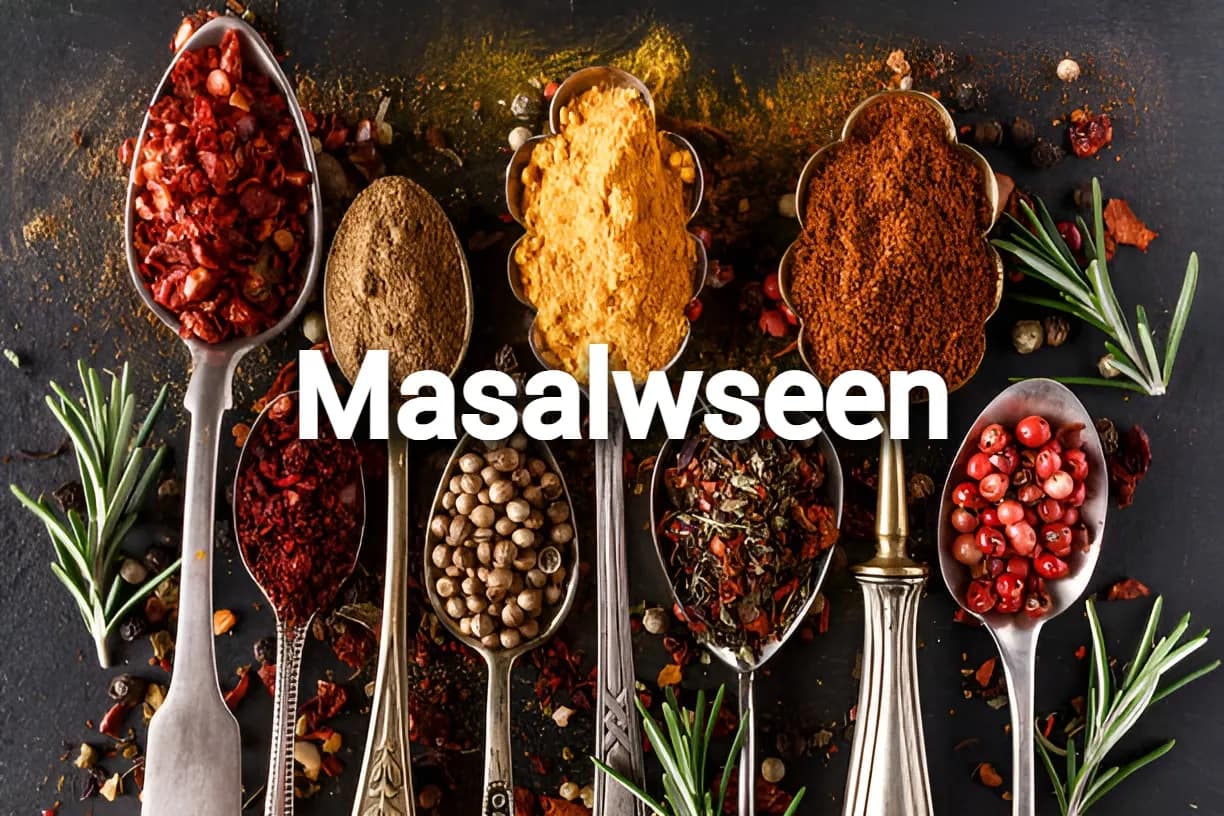Masalwseen: A Traditional Middle Eastern Dish

In the realm of culinary delights, few dishes possess the ability to captivate the senses and transport individuals to a realm of tantalizing flavors and aromas. One such dish that stands as a testament to the artistry of spices and the complexity of taste is Masalwseen. Originating from the vibrant kitchens of South Asia, Masalwseen is a dish that embodies centuries of tradition, cultural exchange, and a profound understanding of spice alchemy.
The Essence of Masal Wseen:
Masalwseen is a dish that fuses the age-old techniques of slow cooking with an intricate blend of spices. The name itself provides insight into its essence. “Masal” refers to the medley of spices that lend depth and character to the dish, while “Wseen” is an Urdu term for meat. Essentially, Masalwseen is a robust meat stew that marries the flavors of succulent meat with a symphony of aromatic spices.
A Symphony of Spices:
At the heart of Masalwseen lies its signature spice blend. The spices used in this dish are not only a feast for the taste buds but also a testament to the culinary knowledge that has been passed down through generations. Common spices include coriander, cumin, turmeric, cardamom, cinnamon, cloves, and bay leaves. Each spice plays a role in harmonizing the flavors, creating a symphony of tastes that dance on the palate.
The Art of Slow Cooking:
One of the defining characteristics of Masalwseen is its method of preparation. The dish is typically prepared using slow-cooking techniques, allowing the meat to tenderize and absorb the flavors of the spices. This patient approach to cooking results in a dish where every bite is infused with the essence of the spices, creating a depth of flavor that is unparalleled.
Cultural Heritage and Evolution:
Masalwseen is more than just a dish; it is a testament to the cultural tapestry of South Asia. The dish has its roots in the Mughlai cuisine of the Indian subcontinent, where the intricate use of spices and slow cooking methods were honed to perfection. Over time, Masalwseen has transcended borders and found its place in various regional cuisines, each adding its unique touch while preserving the core essence of the dish.
Regional Variations:
As Masalwseen traveled across regions, it embraced local ingredients and cooking techniques, giving rise to delightful variations. In Pakistan, for instance, it might be enriched with the smokiness of ghee, while in India, yogurt might be added for a creamy dimension. Kashmiri Masalwseen might feature a touch of saffron, adding a luxurious aroma and color to the dish. These regional interpretations highlight the adaptability of the dish while staying true to its origins.
Masal Wseen Beyond Borders:
In today’s globalized world, Masalwseen has transcended geographical boundaries, finding its way to the tables of food enthusiasts around the world. Its unique blend of spices and the warmth it exudes have made it a cherished comfort food for many. Restaurants and home cooks alike have embraced the challenge of recreating this intricate dish, paying homage to its heritage while adding personal twists.
Cooking as an Experience:
Preparing Masalwseen is not just about following a recipe; it’s an experience that engages all the senses. The sight of vibrant spices coming together, the aroma that wafts through the kitchen as they sizzle, the rhythmic bubbling of the stew as it simmers, and finally, the taste that transports you to a world of culinary marvels—all of these elements contribute to a holistic cooking experience.
Preserving Tradition:
As we celebrate the allure of Masalwseen, it’s crucial to recognize the role of tradition in preserving its authenticity. In a world where fast-paced living often leads to shortcuts in cooking, Masalwseen stands as a reminder of the beauty of slow cooking and the value of time-honored techniques. Aspiring chefs and home cooks alike can learn from the dedication and patience that go into crafting this dish.
In Conclusion:
Masalwseen is more than a dish; it’s a journey that encapsulates centuries of culinary evolution, cultural exchange, and the magic of spices. With every spoonful of this hearty stew, one not only indulges in a medley of flavors but also embarks on a voyage through history. As we savor each bite, let us appreciate the culinary artisans who have meticulously crafted this masterpiece, and let us embrace the joy of cooking and sharing this treasure with generations to come.
Frequently Asked Questions (FAQs) About Masalwseen
1. What is Masalwseen?
Masalwseen, also known as Masala Wseen, is a traditional South Asian dish originating from the Mughlai cuisine. It is a flavorful meat stew that is slow-cooked with a blend of aromatic spices, creating a rich and fragrant culinary experience.
2. What does “Masalwseen” mean?
The term “Masalwseen” is derived from two components: “Masala” and “Wseen.” “Masala” refers to the mix of spices that give the dish its distinct flavor, while “Wseen” is an Urdu word for meat. Together, the name reflects the essence of the dish, which revolves around slow-cooked meat infused with a medley of spices.
3. What are the key ingredients in Masalwseen?
The primary ingredients in Masalwseen include meat (often lamb or chicken), a variety of aromatic spices such as coriander, cumin, cardamom, cloves, and cinnamon, along with onions, garlic, and ginger. Tomatoes and yogurt are sometimes used to add depth and moisture to the stew.
4. How is Masalwseen prepared?
Masalwseen is prepared using slow-cooking techniques. The meat is typically marinated with spices and sometimes yogurt, then seared to seal in the flavors. Onions, garlic, and ginger are sautéed, followed by the addition of spices. The marinated meat is added back to the pot, along with tomatoes and water, and allowed to simmer on low heat until the meat becomes tender and the flavors meld.
5. What sets Masalwseen apart from other stews?
The distinctive feature of Masalwseen lies in its elaborate spice blend and the slow-cooking method. The spices used, combined with the patient slow-cooking process, result in a dish with a depth of flavor that is both complex and harmonious.
6. Can I customize the spice level of Masalwseen?
Absolutely. The level of spiciness in Masalwseen can be adjusted to suit your preferences. If you enjoy a milder flavor, you can reduce the amount of chili powder or omit it altogether. On the other hand, if you prefer a spicier dish, you can increase the amount of chili powder or add chopped green chilies.
7. Are there vegetarian versions of Masalwseen?
While Masalwseen traditionally features meat, there are vegetarian versions available that use vegetables or legumes as the base. These versions maintain the essence of the dish by using the same aromatic spice blend and slow-cooking techniques.
8. What are some common side dishes served with Masalwseen?
Masalwseen is often served with rice or Indian bread such as naan or roti. Accompaniments like raita (yogurt with spices and vegetables), chutney, or a fresh salad complement the richness of the stew.
9. Can I freeze Masalwseen for later consumption?
Yes, Masalwseen can be frozen for later consumption. Allow it to cool completely before portioning it into airtight containers and freezing. When reheating, thaw the stew in the refrigerator overnight and then gently reheat on the stovetop or in the microwave.
10. Is Masalwseen a popular dish outside of South Asia?
Yes, Masalwseen has gained popularity beyond South Asia, thanks to the global interest in diverse cuisines. Many people around the world appreciate its aromatic flavors and hearty nature, and it can often be found on the menus of Indian and Pakistani restaurants internationally.
11. Can I experiment with the spices in Masalwseen?
Certainly. While there is a traditional spice blend for Masalwseen, cooking is an art, and you can experiment with different spice combinations to create your unique variation. Just remember to balance the flavors to ensure a harmonious outcome.
12. What makes Masalwseen a dish of cultural significance?
Masalwseen carries cultural significance due to its historical roots in Mughlai cuisine, which was influenced by Persian and Indian culinary traditions. The dish reflects the artistry of blending spices and slow-cooking methods that have been perfected over generations, making it a culinary treasure that embodies tradition and flavor.






